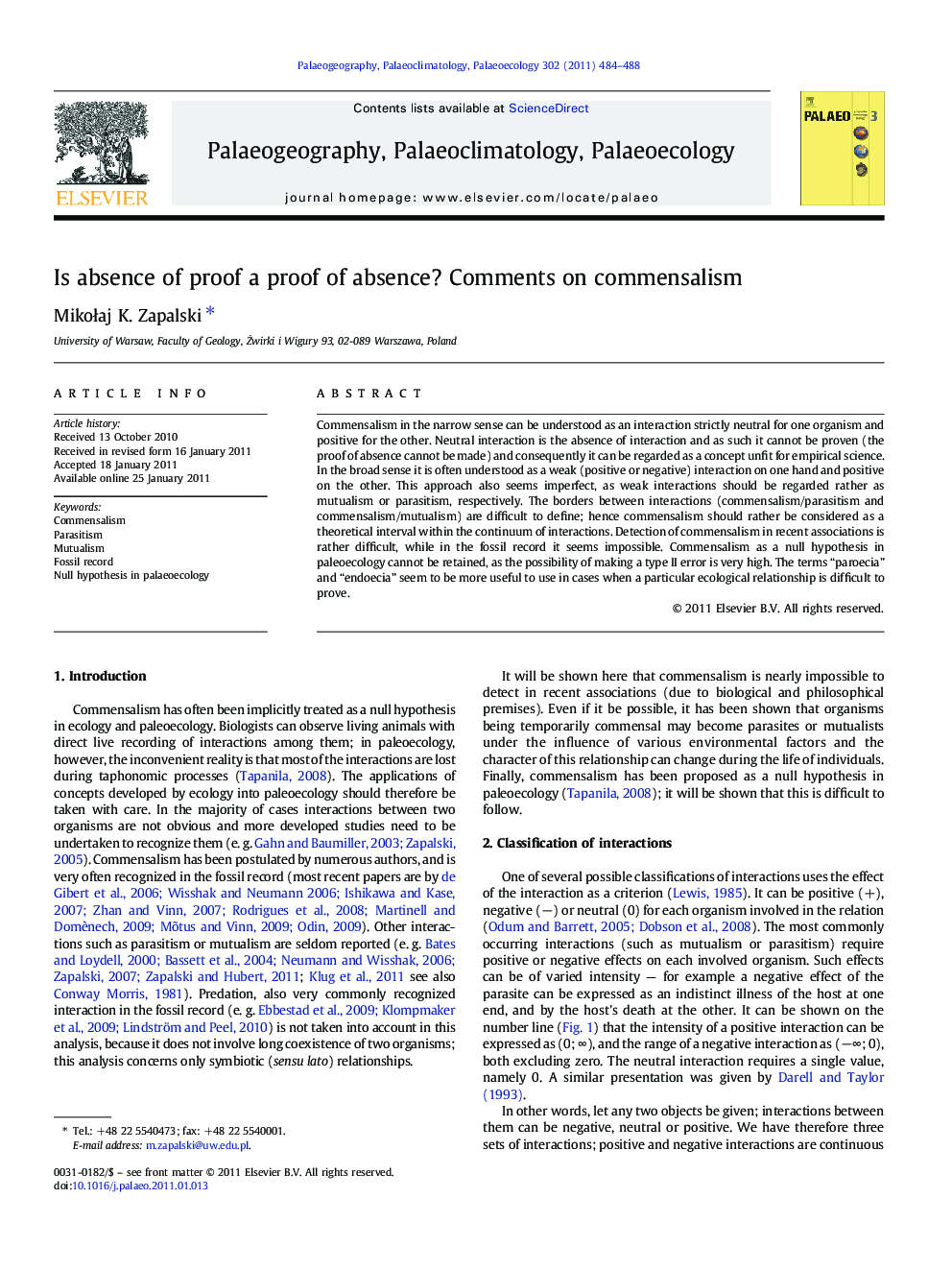| Article ID | Journal | Published Year | Pages | File Type |
|---|---|---|---|---|
| 4467211 | Palaeogeography, Palaeoclimatology, Palaeoecology | 2011 | 5 Pages |
Commensalism in the narrow sense can be understood as an interaction strictly neutral for one organism and positive for the other. Neutral interaction is the absence of interaction and as such it cannot be proven (the proof of absence cannot be made) and consequently it can be regarded as a concept unfit for empirical science. In the broad sense it is often understood as a weak (positive or negative) interaction on one hand and positive on the other. This approach also seems imperfect, as weak interactions should be regarded rather as mutualism or parasitism, respectively. The borders between interactions (commensalism/parasitism and commensalism/mutualism) are difficult to define; hence commensalism should rather be considered as a theoretical interval within the continuum of interactions. Detection of commensalism in recent associations is rather difficult, while in the fossil record it seems impossible. Commensalism as a null hypothesis in paleoecology cannot be retained, as the possibility of making a type II error is very high. The terms “paroecia” and “endoecia” seem to be more useful to use in cases when a particular ecological relationship is difficult to prove.
